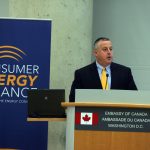Cooking Tom Turkey is going to cost you, but not much. Here is the deal. If you live in a state with an active energy industry you will spend less than others. Using a natural-gas fired stove in North Dakota then you will pay $0.47 to cook a 16-20lb turkey. In Louisiana you will pay $0.96 to cook that same turkey in an electric oven. In Massachusetts, the home of the very first Thanksgiving, you will pay $1.71. The most expensive state is Hawaii at $4.29 for a stuffed 16-20lb turkey using an electric oven.
The U.S. Energy Information Administration reports electricity prices are increasing. For families on a budget that’s nothing to gobble at. Cooking your family’s 16lb turkey for four hours increases your monthly electric bill by roughly 8 kilowatt hours. Add to the bill increased heating, lighting and other electricity usage (such as watching the Detroit Lions on Thanksgiving) you will see an uptick in your energy bills.
Here are a few easy ways to reduce your electrical bill:
Tips from TLC:
- Keep the oven door shut! Opening the oven door to check your food requires more energy to keep oven temperature constant. Instead of opening the door, turn on the oven light and monitor items through the window.
- Use your oven to its full capacity. If possible, put several dishes in the oven at once. This cuts down on the amount of time the oven stays on throughout the day.
- Load the Dishwasher! Some dishes must be hand-washed, of course but when faced with a mountain of holiday dishes, using the dishwasher is usually more energy-efficient. That’s because your hot water heater is one of the largest sources of electricity demand in your home and the dishwasher uses hot water more efficiently.
From TXU Energy:
- Consider an alternate method of cooking your turkey, or try a Consumer Energy Alliance favorite grilling or frying it outside (if you live in a temperate area).
- Use your crock pot or microwave for side dishes.
- If your heat is on, turn the thermostat back to 68 degrees or lower and use the warmth of your kitchen and guests to help heat your home.
- Be sure to turn off lights and ceiling fans in rooms you’re not using during your holiday gathering. Use an ice chest, cooler or colder area like your garage to store drinks to cut down on wasting electricity when the refrigerator door is open.
From the U.S. Department of Energy:
- Open curtains on your south-facing windows during the day to allow sunlight to naturally heat your home, and close them at night to reduce the chill you may feel from cold windows.
- Use ceiling fans to circulate warm air. Most ceiling fans can reverse their direction. By reversing your ceiling fan to a clockwise rotation the fan will help move warmer air pooled near the ceiling back into the living space. This can cut your heating costs by as much as 10%!
These are just a few tips that can help limit the cost of your Thanksgiving holiday. We hope you find them useful and that you and your family have a safe and happy holiday filled with great food, warm memories and low electricity bills!




















